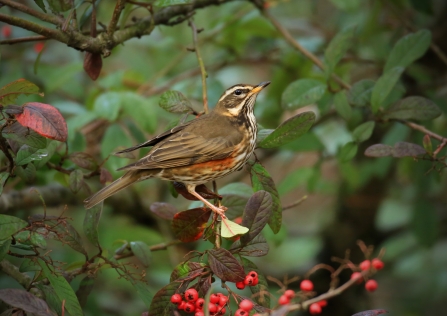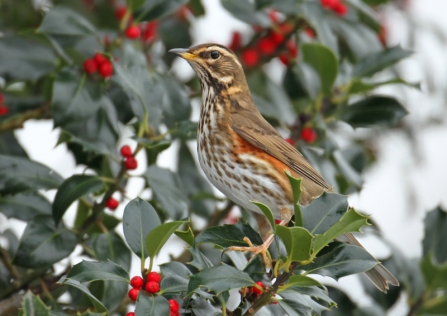Although rarely seen in gardens, during harsh frozen weather Redwings can be tempted into them, attracted by berry-laden bushes, such as Hawthorn and wind-fallen fruit, especially apples. You may have spotted this winter visitor in your garden during ‘The Beast from the East’ last year.
Unlike humans, birds can see ultraviolet (UV) light. Redwings were the first birds used in a study to show the importance of UV to birds whilst foraging. The study found Redwings had a higher preference for feeding on UV-reflecting bilberries rather than bilberries with reduced UV.



